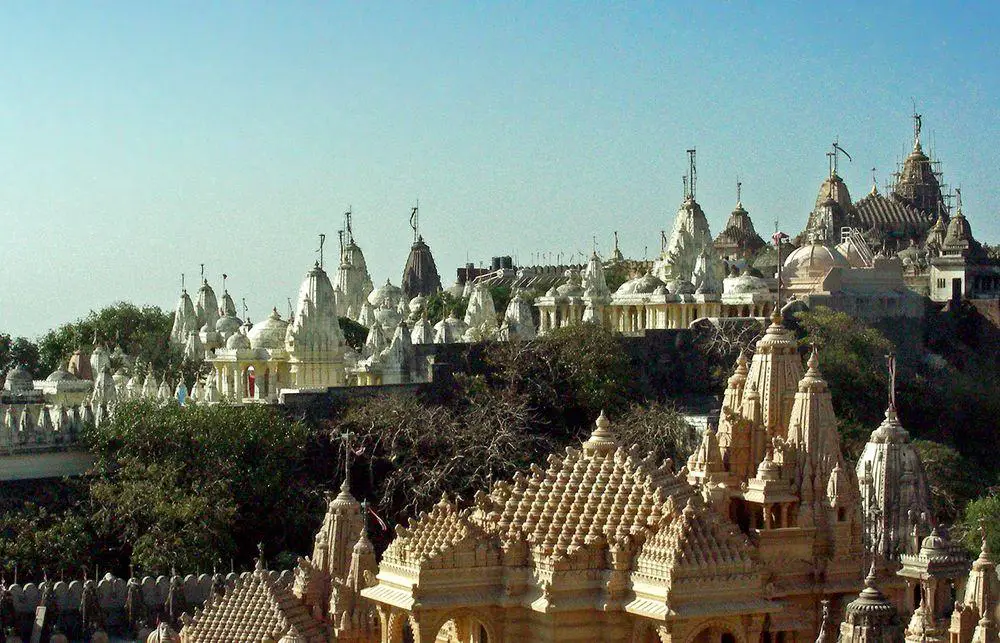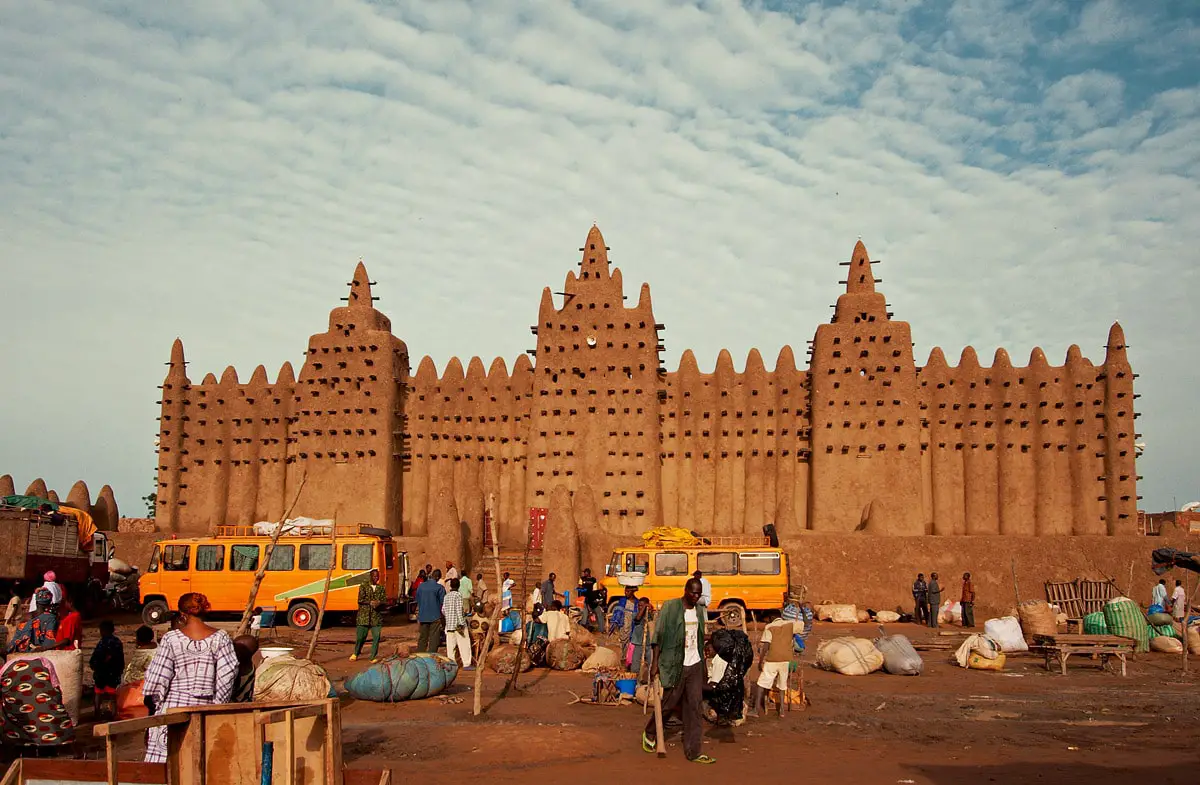Jain shrines 🢔 Religious architecture 🢔 Archaeological wonders 🢔 Categories of wonders
Wonder
Son Bhandar Caves
 In short
In short
The ancient capital city of Rajgir is small, scenic town nowadays. This town has seen many events important to the history of India – also Buddha has been living here and giving sermons to the great king of Magadha – Bimbisara.
 44.5%
44.5%
GPS coordinates
Location, address
Age
Alternate names
Religion
Map of the site
If you see this after your page is loaded completely, leafletJS files are missing.
 In detail
In detail
Among the numerous exciting monuments of the past one of the most interesting and mysterious ones is Son Bhandar Caves – two rock-cut caves located close together at the southern foot of Vaibhar Hill.
Hollowed cliff
Both caves seem to be hollowed in the cliff in the 3rd – 4th century AD – at least inscription inside the western cave, between the door and window tells that it was done by the Great Saint of Jains – Muni Vairadevi for Jain ascetics in this time. Both caves were made approximately at the same time.
Just like the Barabar Caves, Son Bhandar Cave chambers are polished – these are some of the few cave temples in India with this unusual feature. Also, the planning of the caves resembles earlier Mauryan rock-cut sanctuaries and this creates doubt about the age of caves – there is a possibility that they are significantly older.
There are many more brief inscriptions inside and outside the caves from the late 5th – early 6th century, most likely left by different pilgrims.
There was either installed or planned to be installed a figure of Garudasana Visnu – it was found at the front of the cave and is in the museum in Nalanda today. This image seems to be not finished and never installed – possibly hinting at events from the 7th century when caves were taken over for Vaisnava worship.
Ancient enigma of the western cave
It is the western cave that gave the name to the monument: Son Bhandar means “store of gold” and legend about this treasure is linked to the western cave.
The cave – believed to be a guard cave – contains a single rectangular chamber, 10.4 x 5.2 m large. The vaulted ceiling stands on vertical walls, vault rises up to 1.5 m high. This resembles the style of older Mauryan rock-cut sanctuaries. In ancient times most likely there was a roofed verandah in the front of caves.
Walls and doorjambs contain numerous epigraphs. A small image of standing Vishnu is etched on the left side of the doorway – this possibly testifies that caves were taken over for Hindu worship.
Local legend tells that this cave still hides a passage to the treasury of gold – entrance in this passage is well hidden in the cave chamber behind an ancient stone wedge. Some also believe that the passage goes through Vaibhargiri mountain and reaches Saptaparni Caves on the other side of the range.
Some believe that this treasure belongs to Jarasandha, others – that to Bimbisara.
In the case of Bimbisara legend goes that when Ajatashatru confined his father Bimbisara (remnants of this prison are nearby), his mother secretly hid some wealth and later donated it to Tirthankar.
In the wall of the cave there is seen a trace of carving, resembling a doorway, and next to it – an undeciphered inscription in Sankhlipi writing or shell script. It is believed that this inscription is a password – who will read it, will open the door, and enter the passage. This ornate script has been found in India as well as in Java and Borneo and has never been deciphered.
There is also a black mark above or in the upper part of the mysterious doorway – is of left by a cannonball when Brits tried (without success) to break the wall and enter the passage.
Eastern cave
Eastern cave is partly ruined – the front part of the cave chamber has fallen. The upper floor above the cliff made in brick is added later, during the Gupta period, and possibly caused the collapse of the front wall of the cave. Most likely also this cave had verandah in front. The southern wall of this cave contains important early Jain artwork – exquisitely sculpted small reliefs of six Jain Tirthankaras – Padmaprabh, Parsvanath, Mahavira, and others.
This relief seems to be added later, sometime after the completion of caves, it shows little congruity with the plan of rock-chamber.
References
- Travel to Rajgir, Nalanda and Bodhgaya-Part 2. Domainofsonali’s blog – last accessed in 27.03.2010.
- Images of Son Bhandar, Shunya, Rajgir – last accessed in 27.03.2010.
- The Art of Eastern India, 300 – 800. Frederick M. Asher, Minneapolis, 1980.
- Rājagriha: an early historic site in East India. Dilip K. Chakrabarti. Taylor& Francis, 1976
 Linked articles
Linked articles

Jain shrines
Jainism originated in India around 840 BC and is well-known as a religion heralding respect and compassion to all living beings of the world and promoting non-violence and constant spiritual development.
Jain temples belong to the most ornate and impressive buildings in the world. In their construction, there are used stones with intricate, refined carvings.

Wonders of India
India is the seventh-largest country in the world by area, and, naturally, such a large area contains a huge amount of exciting attractions…
Wondermondo considers that India is the second richest center of architectural heritage in the world after Europe and maybe no single country in the world can match it in this respect.

Religious architecture
Since ancient times human talents and skills have been expressed in religious architecture and arts, and traditions and rituals have evolved around pilgrimage sites. Religious buildings represent a major part of the highest achievements in architecture and crafts.
 Recommended books
Recommended books
In The Orient
The stories in this collection are in general set in India, Southeast Asia, and Indonesia, places to which the author traveled while living and teaching in Japan, a country which is situated in such a way so that it provides a gateway to other countries in the Far East.
Illustrations Of The Rock-cut Temples Of India
This is a reproduction of a book published before 1923.
We believe this work is culturally important, and despite the imperfections, have elected to bring it back into print as part of our continuing commitment to the preservation of printed works worldwide.


